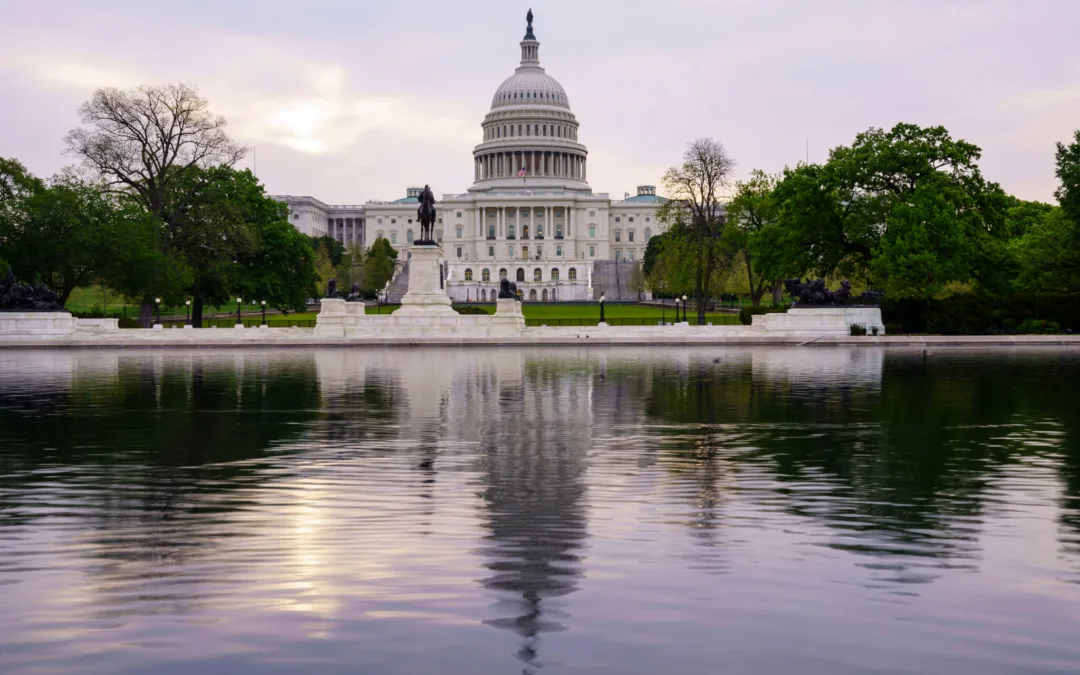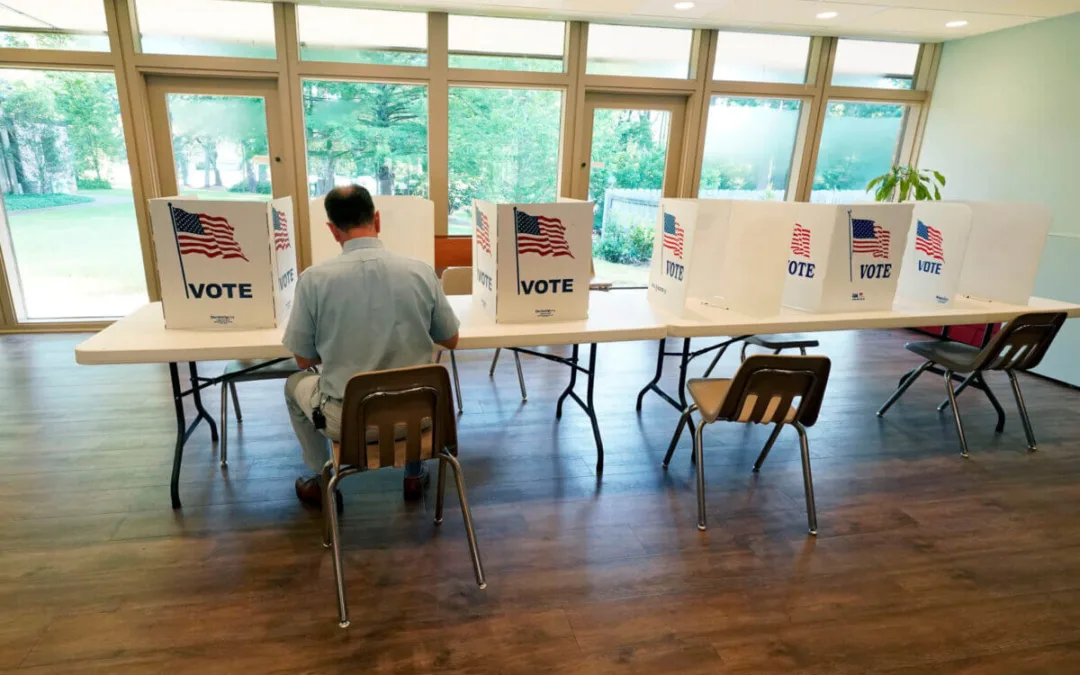
While millions of Americans vote for the president, the Electoral College is the official body by which the president is chosen. (Photo by Alex Wong/Getty Images)
You’re going to hear a lot about the Electoral College this week. With that in mind, we’ve broken down the basics of this often-confusing part of our elections to help you better understand the process.
Every four years the Electoral College plays a role in determining the President and Vice President of the United States. However, understanding the Electoral College isn’t exactly straightforward. From its controversial origin to the actual voting procedures used by the Electoral College, there’s a lot of confusion and debate about it. Read on for an overview of the Electoral College and potential issues that may arise as the 2020 election draws to a close.
What Is the Electoral College?
In the general election, the winner is not determined by the popular vote (the total number of votes for each candidate), but rather by the Electoral College. When a person votes, they are essentially voting for their state’s electors.
Each state receives the same number of electors that it has members of Congress—the combined total of both House and Senate members. There are currently 538 electors in the United States (Washington DC. has three). The electors then cast their vote, and the winner must receive a majority of electoral votes—270 or higher.
Why Was the Electoral College Created? When Did That Happen?
The Electoral College was created as a compromise among the founding fathers on how the president should be elected during the 1787 Constitutional Convention. Some wanted a purely democratic popular vote and others wanted Congress to pick the victor. However, fears were raised that Congress picking the winner would give that branch too much power. There were also concerns that it created the potential for corruption between the executive and legislative branches of government. The other group was wary of each citizen having the resources to make an informed vote. The Electoral College was thus established in Article II, Section 1 of the US Constitution.
How Does the Electoral College Work?
Each state receives the same number of electors as it has members of Congress (the combined total of House and Senate members for each state). Washington DC also receives three electors. While a winner of the presidential race is projected after the popular vote is counted, the actual Electoral College vote doesn’t take place until mid-December (Dec. 14 this year), when the electors in each state meet.
The winner of the popular vote receives all of the electoral votes for that state, except in Maine and Nebraska, where they assign their electors using a proportional system. Washington, DC, and 32 states have laws that bind electors to their state’s popular vote. In rare cases, though, electors have voted against the choice of the voters—these are known as faithless electors.
Who Makes Up the Electoral College?
Each state is allocated a certain number of electors and the state’s political parties choose their own potential electors, known as a slate. Who and how someone is chosen to be an elector varies by state.
What Happens if There Is an Electoral College Tie?
If no candidate receives a majority of Electoral College votes—which is 270 or higher—then the House of Representatives elects the president from the three candidates who received the most electoral votes. Each state delegation gets one vote (the District of Columbia does not receive a vote) and a candidate must receive at least 26 votes to be elected.
The vice president is voted on by the Senate, and the choice is between the top two vice presidential candidates. Each senator has one vote, and a candidate must receive at least 51 votes to be elected.
If there’s a tie between candidates during a state’s popular vote, that state’s laws would determine how the winner would be decided.
Who Are the Electors in the Electoral College?
The selection of electors varies by state, but typically the political parties in each state choose slates of potential electors by either nominating them at their party conventions or via a vote of the party’s central committee. Generally, these are people who have demonstrated dedication or been of service to their political party, such as local elected officials or party activists. The Constitution states that no Senator or Representative, or person holding an Office of Trust or Profit under the United States, shall be appointed an elector.
What Is the Relationship of the Electoral College and Slavery?
When the U.S. Constitution was being written in 1787, approximately 40% of people living in the southern states were enslaved Black people who couldn’t vote. As the founders were allocating the number of electors to each state, whether or not slaves should be counted in a state’s population became a contention. The result was the racist “three-fifths compromise,” where enslaved Black people were decided to count as three-fifths of a person for the purpose of allocating representatives and electors. That law was officially repealed in 1868, by the 14th Amendment.
Can a President Win the Presidency Through the Electoral College Even if They Lose the Popular Vote?
Yes, there have been four recorded elections where the winner of the Electoral College did not win the popular vote.
When Has This Happened?
The first instance of a president winning the Electoral College vote, but losing the popular vote, occurred in the 1876 election between Rutherford B. Hayes and Samuel J. Tilden. The same also occurred in 1888, when Benjamin Harrison won the Electoral college despite Grover Cleveland’s popular vote win. It happened more recently in 2000, when George W. Bush defeated Al Gore, and in 2016, when Donald Trump defeated Hillary Clinton in the Electoral College, despite losing the popular vote by nearly 3 million.
In the 1824 election between John Quincy Adams and Andrew Jackson, Jackson won the popular vote, but neither candidate received a majority of Electoral College votes. The winner was determined to be Adams by a vote in the House of Representatives.
Why Are Some People Calling for the Abolition of the Electoral College?
The biggest reason people are calling for the abolition of the Electoral College is due to the instances of the winner of the election not being the winner of the popular vote. Because the allocation of states’ electoral votes was created in 1787, it does not accurately reflect the distribution of population. In other words, people’s votes in certain more populous states can count less than those in smaller states.
Abolishing the Electoral College would require an amendment to the U.S. constitution.
Politics

Teamsters and UPS Reach Tentative Deal to Avoid Strike, 340,000 Workers to Get Raises
The tentative deal represents a huge win for full- and part-time UPS Teamster workers, who would get significant pay raises and better working...



One Republican Senator Is Blocking 265 Military Promotions, Leaving the Marines Without a Confirmed Leader
Sen. Tommy Tuberville's decision means these military officers are not getting the pay raises they’re owed, cannot move their families to wherever...
Local News



Teamsters and UPS Reach Tentative Deal to Avoid Strike, 340,000 Workers to Get Raises
The tentative deal represents a huge win for full- and part-time UPS Teamster workers, who would get significant pay raises and better working...



One Republican Senator Is Blocking 265 Military Promotions, Leaving the Marines Without a Confirmed Leader
Sen. Tommy Tuberville's decision means these military officers are not getting the pay raises they’re owed, cannot move their families to wherever...




